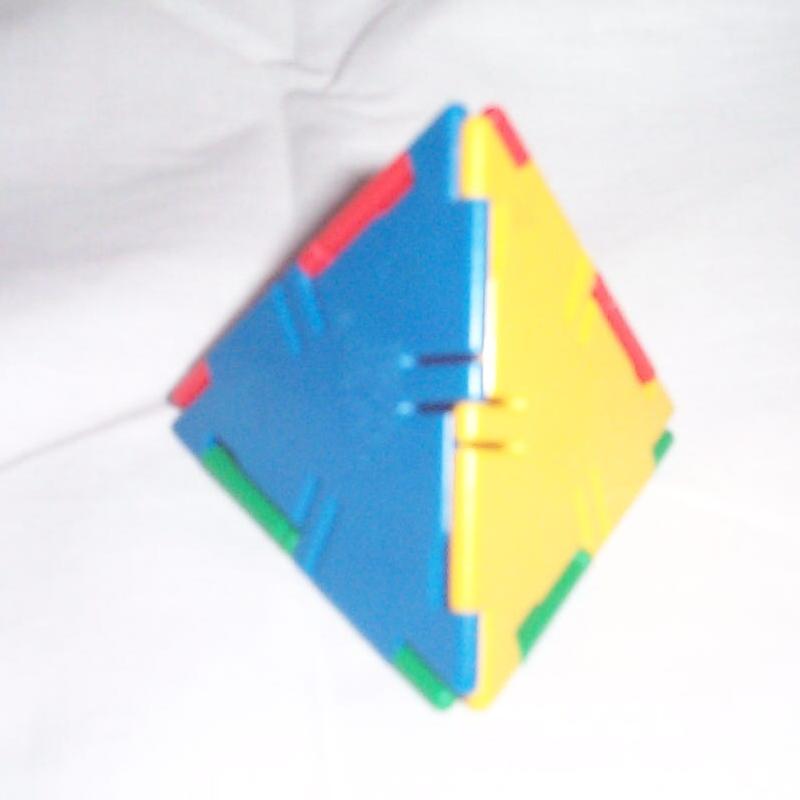
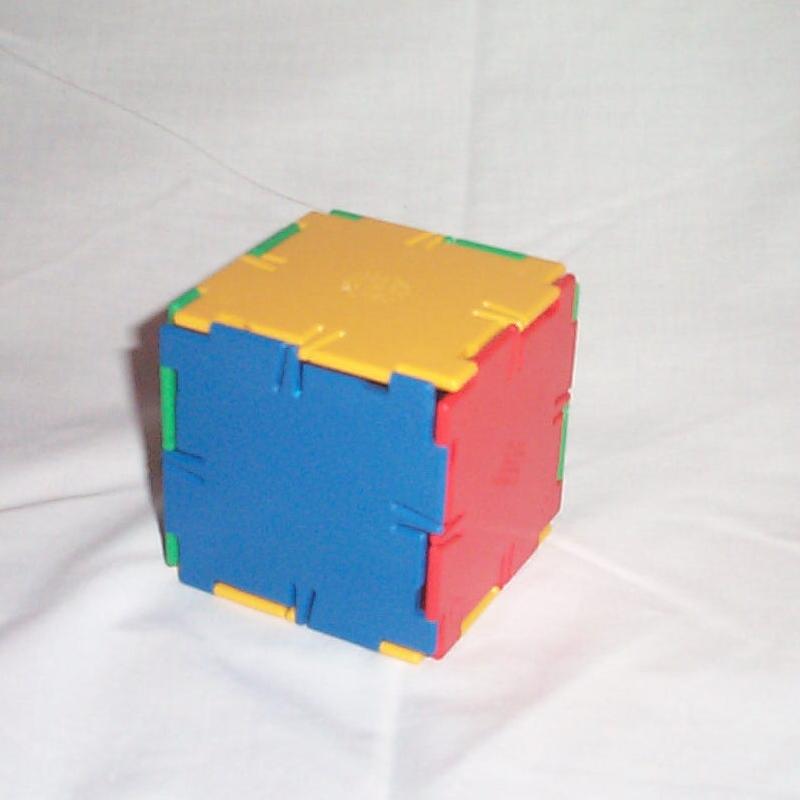
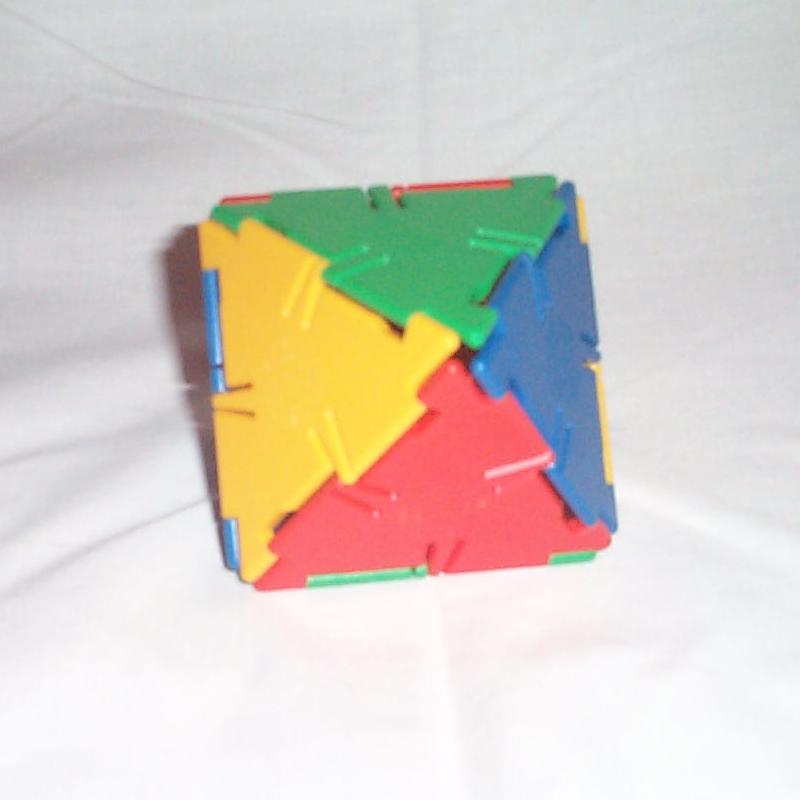
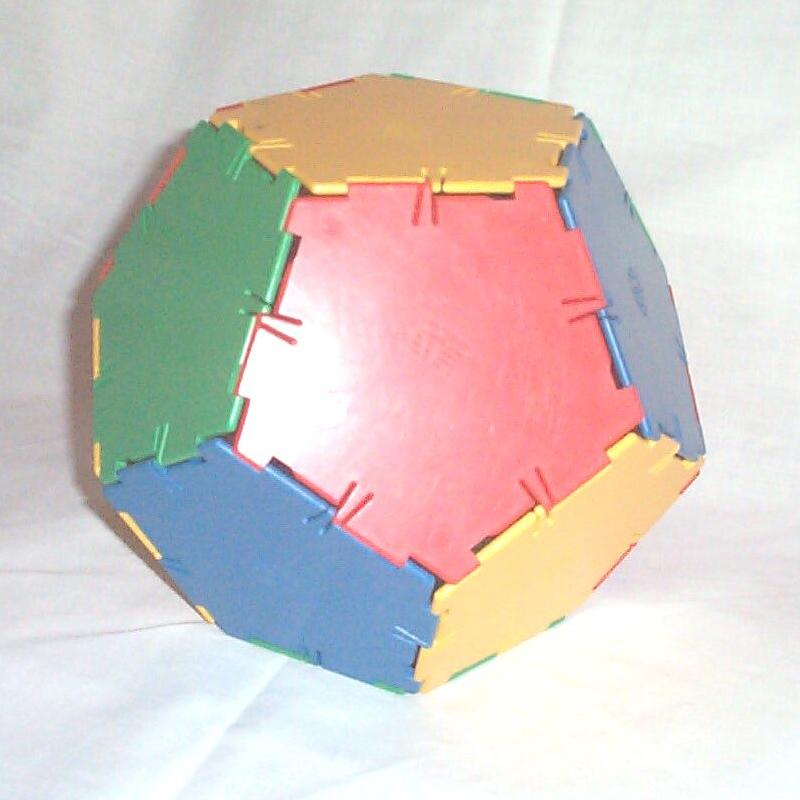
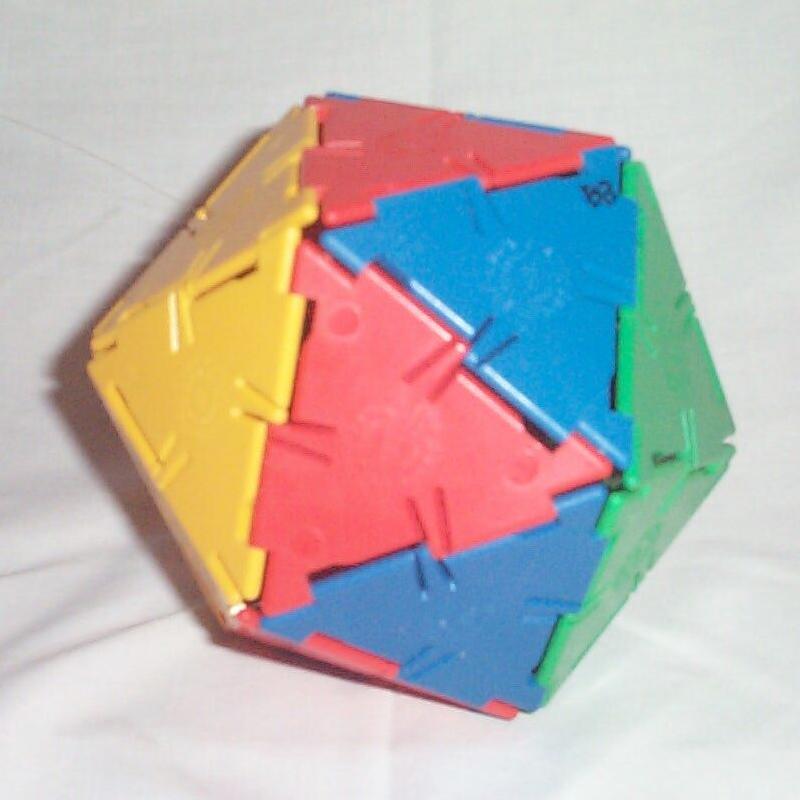


Then we discuss the names for the solids the students have built. These include pyramids, prisms, diamonds (bipyramids), drums (antiprisms), tetrahedron, cube (hexahedron), octahedron, dodecahedron and icosahedron as well as stellated and truncated versions of some of these. All of these are polyhedra.
We then discuss the distinction between regular and irregular polyhedra. The instructor asks "How many regular polyhedra are there?" Depending on how many have been constructed so far, the students may say 3, 4, 5 or infinity (since there are infinitely many regular polygons). The instructor challenges them to build some more. Eventually they conjecture that there are only 5, namely tetrahedron, hexahedron, octahedron, dodecahedron and icosahedron, as pictured below.




